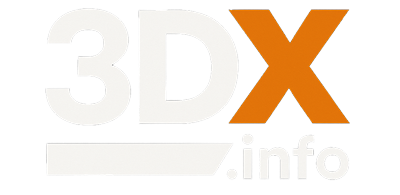Overcoming Stringing: Optimal Retraction Settings in 3D Printing
Stringing, also known as oozing or "hairy" prints, is a common and frustrating issue for many 3D printing enthusiasts. It occurs when molten plastic drips or oozes from the nozzle as it moves between different parts of the print, leaving behind fine strands of plastic. While seemingly minor, stringing can severely impact the aesthetic quality of your 3D models. Fortunately, with proper 3D printing of retraction settings, this problem is largely preventable.
What is Retraction and Why is it Important?
Retraction is a mechanism where the printer's extruder motor quickly pulls the filament back a small distance into the nozzle when it's not actively extruding. This action relieves pressure in the hotend and prevents excess molten filament from oozing out during non-printing movements. Proper 3D print retraction settings are crucial for achieving clean prints, especially when printing models with many small features or intricate geometries where the nozzle frequently moves across open spaces.
Key Retraction Parameters to Optimize
Two primary settings govern retraction: distance and speed.
- Retraction Distance: This refers to how far the filament is pulled back. Too little distance, and oozing will persist. Too much, and you risk creating clogs, grinding the filament, or causing under-extrusion. Typical values range from 0.5mm to 2mm for direct drive extruders and 2mm to 7mm for Bowden extruders.
- Retraction Speed: This is how quickly the filament is retracted and unretracted. A speed that is too slow won't prevent oozing effectively; too fast can strip the filament. Ideal speeds generally fall between 20mm/s and 60mm/s.
Beyond Basic Retraction: Other Influencing Factors
While retraction distance and speed are paramount, other factors also play a significant role in managing stringing:
- Printing Temperature: Higher temperatures make filament more fluid, increasing the likelihood of stringing. Consider reducing your printing temperature.
- Print Speed: Faster travel speeds between print areas give less time for plastic to ooze.
- Filament Type: Some filaments, like PETG and flexible filaments, are inherently more prone to stringing. They often require more aggressive retraction settings.
- Nozzle Wipe/Coast: Some slicer settings include features like "nozzle wipe" or "coast" which briefly stop extrusion before a travel move to clear the nozzle.
The Importance of Kalibracja i Ustawienia (Calibration and Settings)
Achieving perfect prints is an iterative process of Kalibracja i Ustawienia. There's no one-size-fits-all solution for retraction settings, as they vary greatly depending on your printer model, extruder type, hotend, and filament brand. The best approach is to print a retraction test tower. By systematically adjusting one parameter at a time and observing the results, you can dial in the optimal 3D printing retraction settings for your specific setup. Patience and methodical testing are key to eliminating stringing and producing beautiful, clean 3D prints.
Mastering your 3D printing retraction settings is a fundamental step towards consistent, high-quality 3D prints. By understanding the principles and systematically calibrating your machine, you can bid farewell to stringing and enjoy smoother, more professional-looking results.

